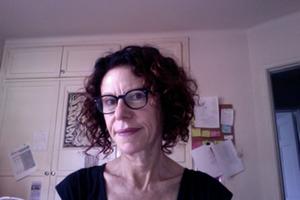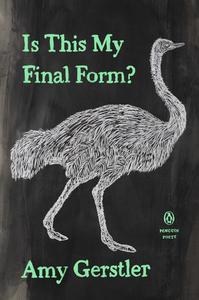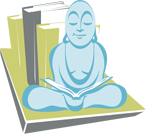
Amy Gerstler is the author of 15 poetry collections, including Scattered at Sea, longlisted for the National Book Award; Dearest Creature, a New York Times Notable Book; and Bitter Angel, winner of a National Book Critics Circle Award. A Guggenheim Fellowship recipient, she has also produced work for the stage in the form of a musical co-written with composer Steve Gunderson. Her latest collection, Is This My Final Form? (Penguin; reviewed in this issue), blends the quotidian and the surreal in its poems about metamorphosis, music, loss, nature, and Covid-19 lockdown.
There's a wide tonal range here, with satire on the one hand and elegies on the other. How does that reflect the range of uses poetry can be turned to?
Hooray for this question. Poetry is historically and contemporarily an INCREDIBLY nimble and capacious genre. From epigrams to epics, its modes and uses are infinite. Could it be the most protean of art forms?
The theme of shapeshifting finds an echo in the question of poetic form. How do you seek to strike a balance between formal structures (like sonnets) and looseness?
I don't know that I was looking for balance between formal structures and looseness so much as variety and/or the kind of range you mentioned earlier to manifest throughout the book. If I was going to try to loosely center this book around themes of transformation, then it seemed important that the forms as well as the content of the poems embody at least some degree of shape shifting.
 The first section of the book contains some poems about women behaving "badly" (thinking of Marigold and Mae West). How have you broken rules in your life and career, and what do these "bad girls" have to teach us?
The first section of the book contains some poems about women behaving "badly" (thinking of Marigold and Mae West). How have you broken rules in your life and career, and what do these "bad girls" have to teach us?
Cool question. I don't know if I would characterize the women in those poems as behaving badly, so much as acting boldly. And it's hard for me to say how I might have broken rules in my career, maybe because I don't think artmaking has rules. You get to make your own, which is one of its attractions. I think women who challenge norms and taboos, women who push back against gender strictures in their lives and work have EVERYTHING to teach us, always: about who humans can be, about freedom, strength, possibility, creativity, self-regard, progress, interdependence, mercy, empathy, joy, enlightenment, love, ethics, the erotic, on and on. That's why I'm endlessly interested in their voices.
Parts of the collection arose from the Covid-19 lockdown experience. Did the constraints of that time fuel creativity for you in some ironic way?
Early in the pandemic, during those few moments when I wasn't paralyzed with fear, I thought: Well, Amy, you are such a loner, and always longing for stretches of quiet, uninterrupted time to write, now maybe you can make use of this. You better! But I learned something about myself during lockdown. I really like to have control over when I am alone and when I see people! I don't thrive in imposed solitude at all! So sad as I am to admit this, I kind of fell apart and wasn't good for much in the initial few months of pandemic confinement. Eventually, I was able to adjust and get work done but it took much longer than I would have liked.
I saw that you're based in Los Angeles. The recent fires must have been a tough time personally and collectively. What do you see as the duty of the artist in the wake of catastrophe?
The fires were truly terrifying. So many people are now living in the aftermath of having lost homes, studios, artwork, writing, schools, whole neighborhoods, loved ones. In the wake of disaster, even during it (since current political calamities seem to be unfolding over protracted periods of time) I think the duty of the individual artist is to determine what they want to speak about through their work and the kinds of work they feel called to make (which is their duty at all times in my view!), and to support their fellow artists and fellow beings through their work and life.
Animals have a strong presence in the book. What roles do other creatures play in your life and work?
Seeing and knowing animals is one of the richest joys of being alive for me. Animals are sharers of the planet, capable of so much more than we give them credit for. I want my work to honor and explore expanded notions of creatureliness and who are sentient beings. So much can be learned from our fellow creatures. At times I have felt more at home with animals than people. I love that passage from Walt Whitman's Song of Myself pertaining to animals. It's way too sweeping and naive (re: the final line for example: of course there are unhappy animals!!) but I still love it:
I think I could turn and live with animals, they are so placid and self-contain'd,
I stand and look at them long and long.
They do not sweat and whine about their condition,
They do not lie awake in the dark and weep for their sins,
They do not make me sick discussing their duty to God,
Not one is dissatisfied, not one is demented with the mania of owning things,
Not one kneels to another, nor to his kind that lived thousands of years ago,
Not one is respectable or unhappy over the whole earth.
You've also worked in other media (such as a musical), and there is a miniature play included in this collection. How do these different ventures nourish you artistically?
The artists I admire most in all genres are constantly pushing themselves, making it new, so I have a hunger to emulate that. And I think most artists have a horror of getting stuck or repeating themselves. A perpetual student at heart, I love writing and literature intensely, so I want to explore those realms as much as I'm able within my one small allotted lifetime. One way to do that is through collaborating with artists in other fields or by attempting to work in genres new to me. --Rebecca Foster, freelance reviewer, proofreader, and blogger at Bookish Beck

